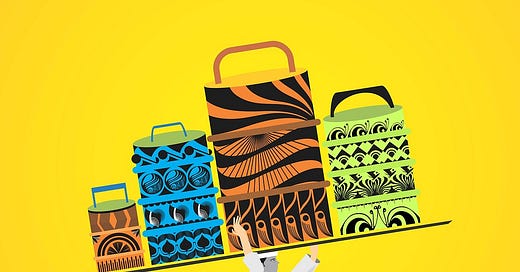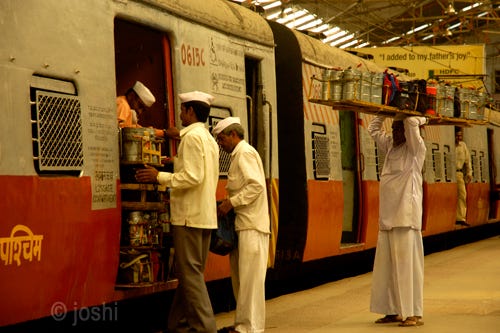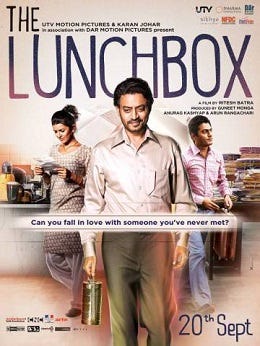FC # 115 was indeed a rush job and yet, my sympathetic readers have made an effort to make some meaning out of it, and have shared their comments.
Ganesh Shenoy shared a different perspective. He says: “The phrase ‘shifting sands and stands’ has always had a negative perception, but if we look at this as being flexible and indicative of changing with the times, it sounds positive. More often than not, our perceptions and interpretations are influenced by generic usage and meanings than by looking at them differently. The classic one is ‘A glass half empty’”
Lynn Weiss from DC says: “Your post reminds me of the 1980 movie “Atlantic City”, where Burt Lancaster looks out at the Atlantic Ocean and states that the “Ocean just isn’t what it used to be!”. It seemed a comical statement at the time, but today even though the ocean appears constant, climate change has altered the tide. How sad that there will be no footprint left behind in the sand to tell the story.”
Tarun Kunzru says; “Nice take on stand and sand! Those who take a stand unaware of changing times could have the problem of stiffness! Those who shift depending on which way the wind blows are considered shifty! Those who evolve with changing times are wise!”
Nisha Sinha says: “The reference to Footprints in the Sand, remind me of the song of the same name by Leona Lewis, which is about friendship” You may use this link if f you are keen to listen to this song: 🔗 Leona Lewis – Footprints in the Sand (Official Video)
Geeta Jaisim asks: “Why is a sandwich called the sandwich? Sandwich is a town in England, more particularly, it is in the Dover district of Kent. The modern sandwich is named after Lord John Montague, the 4th Earl of Sandwich, who was said to be a “dedicated” gambler who did not like to take time out from the game to have a meal. He would, therefore, ask casino waiters to bring him slices of meat between two slices of bread; a habit well known among his gambling friends. Because John Montagu was the Earl of Sandwich, others began to order “the same as Sandwich!” — aka the ‘sandwich’.”
🍱 ATM
No, I am not talking about the currency dispensing machine. I am talking about the Automated Tiffin Machine. The inspiration came from AIM — the Automated Idli Machine which I came across. See for yourself, if you haven’t already:
🔗 Watch: This ATM In Bangalore Delivers Fresh And Contactless Idlis In Minutes
For ease of identity, it is referred to as Idli ATM, which essentially means Idli Automated Tiffin Machine.
What then is tiffin? This word brings back vivid memories of the dabbawalas of Mumbai. If you haven’t seen them yet, you have a sight to behold, a sight for the sore eyes for me. Each dabbawala goes to households in the far and near suburban areas and picks up the food containers placed inside a colour-coded tin carrier. It then changes many hands and many trains and gets delivered to the intended person. Not just that, but a few hours later the same tin carrier is picked up from the office or factory and travels all the way back to the doorstep of the house from where it was collected in the first place. A fascinating example of logistics & supply chain management!
In 1890, Mahadeo Havaji Bachche started a lunch delivery service with about a hundred men. In 1930, he informally attempted to unionize the dabbawalas. Later, a charitable trust was registered in 1956 under the name of Nutan Mumbai Tiffin Box Suppliers Trust. The commercial arm of this trust was registered in 1968 as Mumbai Tiffin Box Supplier’s Association.
Reportedly there are 5000 dabbawalas, and they don’t have any hierarchy. Their association is the best example of a flat organisation. Invariably they are Maharashtrians and communication among them never fails. They have attracted the attention of leading institutions, which have carried out studies on them. King Charles and Bill Clinton have marvelled at their infallible organisational skills. Charles also invited them to his wedding with Camilla Parker Bowles in London on 9 April 2005. The dabbawalas are featured in the Guinness Book of World Records, registered with Ripley’s Believe It or Not and many other recognitions. In 2005, the Indian Institute of Management (Ahmedabad) featured a case study on the Mumbai Dabbawallas from a management perspective of logistics. In 2010, Harvard Business School added the case study The Dabbawala System: On-Time Delivery, Every Time to their compendium for its high level of service.
Their network and reach was so far and wide that they were used to spread awareness among people, promoting products and even films. Some companies are reported to have used them as couriers to do home delivery of IPO applications, making it easy for people to participate in a public share offering. The dabbawalas of Mumbai upgraded their services as technology advanced. They started using SMS to accept deliveries and improved the colour coding system.
However, the pandemic did not spare the Dabbawalas. They were badly hit. With increasing number of people opting for work-from-home or the hybrid working model, it is said that a dabbawala who used to collect 25 dabbas is now able to collect a third or fourth of that number. Hopefully the system will regain its past glory.
How did this word ‘tiffin’ come about? According to the Guardian, when the British established themselves in India in the late 18th century, it soon became clear that adaptation was needed. For a start, the rituals of eating were going to have to change to accommodate the hot, languid days and nights. In the heat of the day, lunch became a much lighter meal – but what to call it? Somehow, the word that seemed to stick was ‘tiffin’, taken from the slang words ‘tiff’, a tot of diluted liquor, and ‘tiffing’, to take a sip of this liquor (perhaps a hint that a sahib's lunch might quite often be of the liquid variety!) Tiffin took off, and “a spot of tiffin” soon became a peg on which almost any culinary indulgence between breakfast and dinner could be hung.
Indians, at least those who could afford it, typically had a four meal concept. Breakfast, Lunch, Tiffin, Dinner. Tiffin was typically had around 4 to 5 pm when people returned from their daily chores, by when the lunch would have been digested. As I have known it was a kind of light meal comprising stuff like, a dosa, upma, samosa to be had with tea or coffee.
While couriers like dabbawalas in other cities also carry lunch boxes, the lunch box can by itself be used as a messenger. It is not uncommon for the wife to leave a note for the husband to fetch something or attend to something on his way back home. On a lighter note, the husband too could send a note that he is working overtime and do some bar hopping :)
At times, albeit rarely, the lunch box may go astray as seen in the movie (I loved it, Irfan was at his best). Please watch it if you haven’t already. 🔗 The Lunchbox 2013 Hindi | Irfan Khan movie| Hit movie
There is also a Bengali Movie ‘Tiffin Box’ which you can view on Prime Video. I believe it is very nice.
I was told by someone that a light supper is also referred to as ‘night tiffin’. Apparently, those who wished to sleep on a light stomach preferred to have a tiffin at night. This also reminds me of my grandmother and other elders who used to observe Ekadashi which involved fasting and, in any case, having a some light repast. Ekadashi, in English, is known as the 11th lunar day. If you are interested in night tiffin, here’s a link for you:
🔗 40 Easy Night Tiffin Indian Recipes.
Before I conclude, here are some lines about the tiffin:
“In my tiffin box is a little something which we all call ‘break’ to eat during the break.”
“I hated roti and bhaji in my tiffin every day. When I moved to the States, I longed for them’
“Bubloo, you forgot to take out your tiffin box from your school bag. Now you better wash that stinking thing!”
“The tiffin box is a symbol of your mother’s love”
“I had a tiff with my wife, so no tiffin :(“
Take care, my friends, and be safe.







Nothing more to comment Pras but to doff our hats to the innumerable women and perhaps a few men too (?) who pack "tiffin" for their spouses and children day after day ... The kind of advance planning and execution for cooking and packing tiffin on time day after day is no less admirable than the dabbawala .. May God bless all of them !
A very thoughtful topic. Apart from all that is mentioned the dabbawallas are also very commonly mentioned in Six Sigma case studies. They have been very closely tracked as a project and have achieved an error rate equivalent to six signa ie their accuracy is 99.99966%. Come to think of it this is a phenomenal achievement! Imagine a pure vegetarian waiting for his wife's dhoklas but gets mutton kheema balls instead!! This pin point accuracy rate is what has made the dabbawallas so popular and left Six Sigma practicioners in awe.